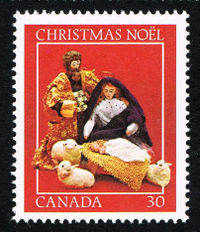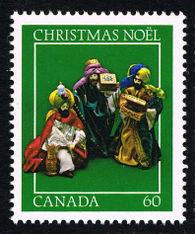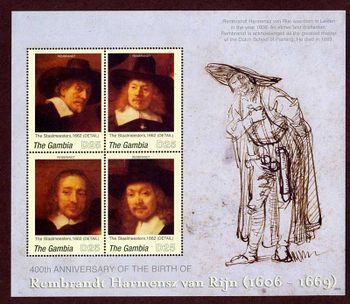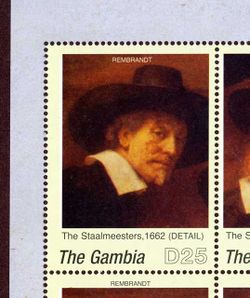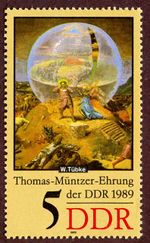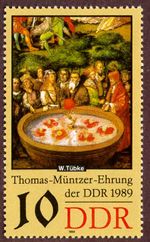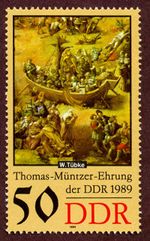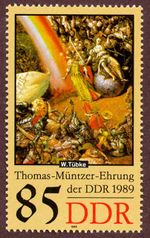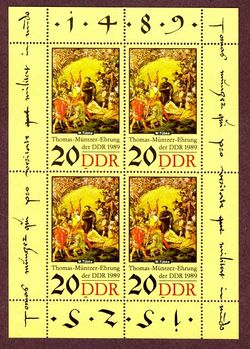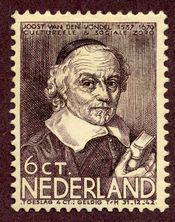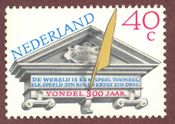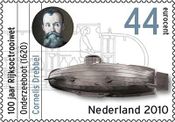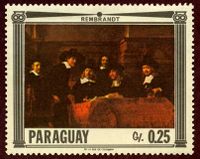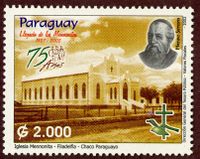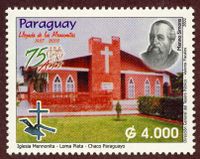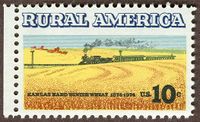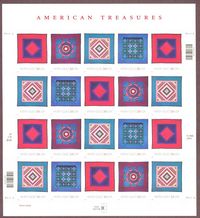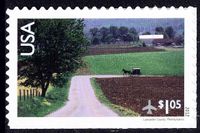Postage Stamps
Introduction
The adhesive postage stamp used to frank mail was invented in 1840. Since then hundreds of countries have issued over 500,000 different stamps. By 1900 stamp collectors numbered in the millions and a significant body of literature had developed. In the first decades of use, postage stamps usually featured images of national leaders or emblems or occasionally numerical designs. Countries soon realized their stamp designs identified them to the wider world and could be used to promote national issues and themes. In addition to national leaders, postage stamp images have ranged from famous people, historical events, sports, animals, holiday themes, and a bewildering variety of other themes. By the second half of the 20th century smaller countries also realized that though stamps were relatively inexpensive, when millions of collectors purchased them a significant level of revenue could be generated. Some countries then produced stamps primarily for collectors. Such stamps were colorful, issued on many different themes, and often in multi-stamp sets. In addition, when an unused stamp was added to a private collection, the country received revenue without delivering any mail.
Modern postage stamp design usually features the country’s name and a country-specific subject adorned with bright colors, artistic design, and minimal text. Countries have often used several additional means to generate extra revenue from postage stamps used in regular mailings. One device has been to add a small surtax for a specific purpose to the standard postal fee. These stamps are called “semi-postage.” Another revenue generator has been to issue special commemorative stamps specifically for collectors. An example is the Souvenir Sheet or Miniature Sheet. These feature a small group of postage stamps still attached to the sheet on which they were printed, often with extra promotional text and illustrations. In about 1920, countries also began to issue First Day Covers. These are special envelopes with cachets often released at a ceremony on the first day a stamp is issued. The celebrations were to generate publicity about the new stamp and often honor people such as descendants or historic locations of the stamp’s subject. A cachet is specially mark or artwork that is added to the envelope, complementing the stamp subject.
A number of postage stamp catalogs have been published as reference guides to assist in their description and for coordinating information. This article uses the numbering system in Scott Standard Postage Catalog.
Mennonites are small minorities in the countries in which they live, and have almost never been national leaders. Consequently their national profiles have been small. However, they have had some accomplishments of national significance that have been recognized through postage stamps with Mennonite or Anabaptist related themes.
Austria
Bummerlhaus Steyr
The Austrian postal service on 5 November 1953 issued a semi-postage stamp (Scott: Austria #B281, Figure 1) in the denomination of 70 + 15 groschen picturing the medieval gothic house known as Bummerlhaus. The 15 groschen surtax raised funds to reconstruct the Lutheran (Evangelical) School in Vienna. Bummerlhaus is a three story building with an attic under a steep hipped roof and a richly decorated façade located in the historic area of Steyr. According to Harold W. Turner Bummerlhaus was used as a meeting house in the 16th century by Anabaptist followers of Hans Hut.
Canada
Mennonite Settlers Centenary
The Mennonite Settlers Centenary (Scott: Canada #643, Figure 2) was an 8 cent postage stamp issued on 28 August 1974 to mark the centenary of Mennonite settlers in Manitoba, Canada. Almost 8,000 Mennonites arrived from 1874-1880 and settled on two reserves on the east and west sides of the Red River between Winnipeg and the United States border. The postage stamp was issued in 50 stamp sheets in a total quantity of 28,700,000 stamps and was phosphorescent tagged for automatic machine cancellation.
The lithographed four color stamp depicted a group of nine people in 19th century eastern European dress in front of a farm scene with a sod house set on the prairies.
Christmas Crèche Figures
Since 1964 Canada Post has annually issued special Christmas postage stamps. On 3 November 1982 Canada Post issued a set of three Christmas stamps (Scott: Canada #973, 974, 975, Figures 3a, 3b, and 3c) which displayed photographs of crèche figures made by the Mennonite Folk artist Hella Braun. The 30 cent denomination stamp in red depicts the Holy Family at a manger scene; the 35 cent stamp in blue depicts the shepherds with their sheep, and the 60 cents stamp in green shows the Three Wise Men with their gifts. The stamps all have the words "Christmas Noël" at their top.
Gambia
Rembrandt (1606-1696) Painter Souvenir Sheet
On 23 August 2006 the west African country of Gambia issued a sheet of four stamps commemorating the 400th anniversary of Rembrandt’s birth (Scott: Gambia #3028, Figure 4). The 25 dalasi postage stamp featured portraits of the four men from Rembrandt’s painting The Syndics (de Staalmeesters). The man illustrated in the upper left hand panel was the Mennonite cloth merchant Volckert Jansz (ca. 1610-1681)(Figure 5).
German Democratic Republic
Peasants War – 450th Anniversary Souvenir Sheet
This six postage stamp souvenir sheet (Scott: East Germany #1619, Figure 6) was issued on 11 February 1975 in celebration of the 450th anniversary of the Great German Peasants' War (Große Deutsche Bauernkrieg). This war failed in 1525 after the peasant army’s defeat at the Battle of Frankenhausen. The government of the German Democratic Republic (East Germany) regarded the revolutionary Anabaptist Thomas Müntzer (1488/9-1525), the leader of the German peasants, as a forerunner of modern socialism and issued this souvenir sheet in honour of his death and of the peasant uprising.
The six postage stamp sheet featured the following stamps: 5 pfennig, "forced labour"; 10 pfennig, "Peasants paying the tithe"; 20 pfennig, "Thomas Müntzer"; 25 pfennig, "Armed Peasants"; 35 pfennig, "Peasant Liberty flag"; 50 pfennig "Peasants on trial."
Thomas Müntzer (1488/9-1525) Religious Reformer Souvenir Sheet
A second commemorative souvenir sheet (Scott: East Germany #2736, Figure 7), Thomas Müntzer-Ehrung der DDR 1989 (Thomas Müntzer-venerated by the GDR 1989) was issued on 21 March 1989. It commemorated the 500th anniversary of his birth. It is a single 1.10 mark postage stamp souvenir sheet featuring a historic map with towns marked in red which were prominent in the life of Müntzer during the Peasant’s War.
Thomas Müntzer (1488/9-1525) Religious Reformer Souvenir Sheet and Five Stamp Set
On 22 August 1989 the German Democratic Republic issued further postage stamps honoring Thomas Müntzer and his followers. These five stamps (Scott: East Germany #2767, 2768, 2769, 2769a, 2770, 2771), Figures 8-12) commemorated the opening of the Panorama Museum in Bad Frankenhauser, Germany. They depicted scenes from the Peasants’ War as represented in Werner Tübke’s gigantic panorama paining: Frühbürgerliche Revolution in Deutschland (Early Bourgeois Revolution in Germany). The 5 pfennig stamp featured a proclamation of a farmer from a bluish, translucent sphere (symbolic of the change in world view from the window to the ball), the 10 pfennig depicted historic figures around a fountain with flowers and pomegranates, the 20 pfennig showed Thomas Müntzer, lowering his Bundschuh pennant as a symbol of the defeat of the peasants, the 50 pfennig a depicted ship on dry land and the 85 pfennig showed a rainbow over a battle scene with justice on the globe, Pilate washing his hands and a fool. The 20 pfennig stamp was also issued as a four stamp souvenir sheet (Figure 13).
Germany
300th Anniversary of Immigration to the USA
On 5 May 1983 West Germany issued an 80 pfennig postage stamp (Scott: West Germany #1397) with an illustration of the sailing vessel Concord which in 1683 brought 13 Quaker- Mennonite families to settle in Pennsylvania. These were the first German immigrants, mostly from the Rhineland area of Germany, to settle in what later became the United States of America where they established the settlement of Germantown.
The brown stamp (Figure 14) had the ship image engraved with text added in lithograph. On the left is: "Einwanderung der ersten Deutschen in Amerika" (Immigration of the first Germans in America), the county’s name "Deutsche Bundespost" and the year "1983" is small type at the bottom.
In a rare form of postal cooperation the USA issued at nearly the same time a very similar commemorative postage stamp "Concord: German Immigration Tercentennial." See below, Scott: USA #2040.
Mali
Cornelius Jacobszoon Drebbel (1572-1633) Souvenir Sheet
In 2010 the Republic of Mali followed the lead of Netherlands by issuing a two stamp souvenir sheet (Scott: Mali number not yet assigned) honoring the submarine’s invention. The 800 West African CFA franc stamp featured an early 20th century submarine and the 1400 franc stamp (Figure 15) displayed a portrait of the Mennonite, Cornelis Drebbel, who was the inventor of the submarine.
Netherlands
Joost van den Vondel
On 1 June 1937 Netherlands issued a 6 +4 cent semi-postage stamp (Figure 16, Scott: Netherlands #B96) with a portrait of the Dutch poet Joost van den Vondel (1587-1679). The surtax of 4 cents raised funds for social and cultural projects. The top of the stamp read: “Joost van den Vondel 1587-1679; Cultureele & Sociale Zorg” and the bottom: “Toeslag 4ct.; Geldig T/M 31-12-42.” Vondel was considered the most eminent Dutch poet and playwright of his nation’s Golden Age. He joined the Waterlander Mennonites in Amsterdam but left them about 1641-43 and joined the Catholic Church.
Inscribed Tympanum and Architrave
The Inscribed Tympanum and Architrave 40 Euro-cent postage stamp (Scott: Netherlands #592, Figure 17) was issued 2 October 1979 to honor the 300th anniversary of the death of Dutch poet and playwright Joost van den Vondel (1587-1679). The multicolor design featured a feather pen set on an architrave (lintel) set under a tympanum (triangular arch) set with a crest. On the architrave was the text of Vondel’s famous motto: "De wereld is een speel tooneel, Elk Speeld zyn Rol en Krygt zyn Deel.: Vondel 300 Jaar.” (The world is a stage, each player his role and each gets his part: Vondel 300 years).
Dutch Paintings Souvenir Sheet
The Netherlands postal service issued a souvenir sheet on 8 June 1999 to celebrate Dutch painting. The sheet contained 10 different postage stamps, each with a denomination of 80 Euro-cent and illustrating a painting by a different celebrated Dutch artist. One of the stamps (Scott: Netherlands #1029, Figure 18) displayed the painting “Gezicht op Haarlem” (View of Haarlem) by the Dutch Mennonite artist Jacob Isaackszoon van Ruisdael (1628-1682).
Landscape Paintings Souvenir Sheet
On 11 June 2002 Netherlands issued a 10-stamp souvenir sheet with examples of landscape painting by distinguished Dutch artists. The wide margins of the souvenir sheet adjacent to each stamp gave the artists name and the title of his painting. Each postage stamp has a 39 Euro-cent denomination. One stamp (Scott: Netherlands #1133, Figure 19) featured the painting "Het korenveld" (Grain Field) by the Mennonite painter Jacob Isaackszoon van Ruisdael (1628-1682).
Menno Simons 500
In 1996, the 500th anniversary of the birth of Menno Simons, the regional mail company Regio Post Noord-Oost Friesland [Regional Post: North-East Friesland] issued a sheet of 10 postage stamps with a 50 Euro-cent denomination. Each stamp (Scott: Netherlands: Not listed, Figure 20) featured a reproduction of the Menno Simons painting by William Bartel van der Kool which was painted in 1824. At the bottom is the text "MENNO SIMONS" with the two letters "O" in bold type and the number "5" set at an angle and below the name so that the three characters spell the number "500". The sheet was 10.0 x 15.0 cm and designed by Kollum Lansa. Because the postage stamp was not issued by the Dutch government postal service but issued by a local commercial mail company the Scott stamp catalog company did not consider it an official national postal stamp and did not list it.
Dutch Patent Act Souvenir Sheet
The year 2010 marked the 100th anniversary of the Dutch Patent Act. In commemoration in February 2010 a souvenir sheet of 10 ten stamps was issued each with the denomination of 44 Euro-cents. One of the stamps (Scott: Netherlands #1353a, Figure 21) displayed the invention in 1620 of the first submarine by the Dutch Mennonite inventor Cornelius Drebbel with his portrait. Drebbel's portrait came from the Marine in Den Helder and was drawn long time after Drebbel's death. The submarine on display was a replica exhibited in the Alkmaarsch Stedelijk Museum in 2004. The gummed stamp is 36 x 25 mm. in size and 380,000 sheets were printed.
Paraguay
Famous Paintings: Rembrandt
On 16 July 1967 Paraguay issued a set of nine postage stamps with illustrations of famous paintings. In this set was a 25 centimos postage stamp (Scott: Paraguay #1034, Figure 22) with Rembrandt’s The Syndics (de Staalmeesters). The Syndics depicted a group of six dignitaries of the Amsterdam cloth guild, with the Mennonite merchant Volckert Jansz (ca. 1610-1681) prominently featured just rising, second from the left.
75th Anniversary of the arrival of Mennonites in Paraguay
On 25 June 2002 Paraguay issued two stamps of similar design (Scott: Paraguay #2692, 2693, Figures 23-24) to honor the arrival of Mennonite settlers in Paraguay 75 years earlier. On the upper left hand corner of both stamps was the text: "Paraguay Llegada de los Mennonitas 1927-2002" (Arrival of the Mennonite in Paraguay 1927-2002) and under this is: "75 Anos" with three sketched-in figures. Both stamps featured a portrait of Menno Simons in their upper right corner and a symbolic cross and plow in the bottom right corner. On the bottom of the 2,000 guaraní stamp was the text: "Iglesia Mennonita–Filadelfia–Chaco Paraguayo" (Mennonite Church–Filadelfia-Chaco Paraguay). The 4,000 guaraní stamp had the text: "Iglesia Mennonita–Loma Plata–Chaco Paraguayo" (Mennonite Church–Loma Plata-Chaco, Paraguay).
United States of America (USA)
Kansas Winter Wheat
The Kansas Winter Wheat 10 cent postage stamp (Scott: USA #1506, Figure 25) was issued on 16 August 1974 at Hillsboro, Kansas, USA, in celebration of the 100th anniversary of Mennonite immigrants from Russia who arrived in Marion County, Kansas, in August 1874 with Turkey Red wheat. Turkey Red was a hardy, drought-resistant, heavy-yielding wheat. The postage stamp was the third in the three stamp Rural America Series, was designed by John Falter and was issued in 50 stamps sheets.
The postage stamp pictured golden wheat fields with a locomotive pulling a tender and two passenger cars under blue skies with modern combines in the background. "Rural America" was printed in block letters across the top, "with Kansas Hard Winter Wheat" in fine black print at the bottom. "US 10¢" was in black in the lower right.
Each stamp measured 1 inch by 1.5 inches wide (2.54 cm x 3.81 cm). The entire sheet measured 10.25 x 9 inches (26.04 cm x 22.86 cm).
Concord: German Immigration Tercentennial
On 29 April 1983 the USA issued a 20 cent postage stamp (Scott: USA #2040, Figure 26) to commemorate the 300th anniversary of the arrival in the English Colony of Pennsylvania of 13 Quaker–Mennonite families on the sailing ship Concord. These families established the settlement of Germantown west of Philadelphia and were the first German settlers in what later became the United States of America. The engraved stamp was printed in brown.
In a rare form of postal cooperation West Germany also issued at nearly the same time a similar commemorative postage stamp as “Concord: German Immigration Tercentennial.” See above, Scott: West Germany #1397.
Amish Quilts
On the 9 August 2001 in Nappanee, Indiana, the US Postal Service issued four different self-adhesive postage stamps (Scott: USA #3524, 3525, 3526, and 3527, Figure 27) featuring Amish quilts. These stamps were the first in a new series of "American Treasures" which honored USA art and artists. The stamps were issued in sheets of 20 stamps; each stamp had a 34¢ denomination. The text at the bottom of each stamp was: “Amish Quilt 34 USA.” A total of 96 million stamps were printed.
The four quilts displayed saturated colors, bold geometric patterns, and central design motifs characteristic of quilts made in Lancaster County, Pennsylvania, during the first half of the 20th century. The illustrated quilts were owned by the Foundation for Deep Ecology in Albion, California.
The quilt designs were described as follows: (top four stamps, l-r) Diamond in the square, c.1920; Lone star, c.1920; Sunshine and shadow, c.1910; Double ninepatch variation.
Lancaster County, Pennsylvania
On 20 January 2012 the US Postal Service issued $1.05 denomination stamp (Scott: USA #C150, Figure 28) honoring Lancaster County, Pennsylvania, in their “Scenic America Landscapes” series. The stamp was issued in self-adhesive sheets of 20 stamps. This denomination was a First-Class Mail one-ounce postal rate for international mail to countries other than Mexico and Canada. The multicolored stamp featured the beauty of the rural Lancaster County landscape as an Amish buggy travelled along a country road, passing one of the county's iconic farms.
Stephen Kearney a Services Manager of the U.S. Postal Services described Amish as pictured in this stamp this way: "The Amish, with their horse-drawn buggies, one-room schoolhouses and traditional lifestyle, give the county an Old World charm. Their pristine family farms, surrounded by neatly cultivated fields, offer visitors a glimpse of another century and a quieter way of life."
Additional Information
Table 1: Postage Stamps Featuring Anabaptist and Mennonite Themes
| Stamp Description | Scott Number | Denomination | Date of issue |
|---|---|---|---|
| Austria | |||
| Bummerlhaus Steyr | #B281 | 70 +15 groshen | 5 November 1953 |
| Canada | |||
| Mennonite Settlers Centenary | #643 | 8 cents | 28 August 1974 |
| Christmas Crèche Figures | #973 | 30 cents | 3 November 1982 |
| " | #974 | 35 cents | |
| " | # 975 | 60 cents | |
| Gambia | |||
| Rembrandt | #3028 | 25 dalasi | 20 August 2006 |
| German Democratic Republic | |||
| Peasants War – 450th Anniversary Souvenir Sheet | #1619 | 5,10,20,25,35,50 pfennig stamps (6 stamp sheet) | 11 February 1975 |
| Thomas Müntzer (1488/9-1525) Souvenir Sheet | #2736 | 1.10 mark | 21 March 1989 |
| Thomas Müntzer (1488/9-1525) | #2767 | 5 pfennig | 22 August 1989 |
| " | # 2768 | 10 pfennig | " |
| " | #2769 | 20 pfennig | " |
| 4 stamp souvenir sheet | # 2769a | 20 pfennig | " |
| #2770 | 50 pfennig | " | |
| #2771 | 85 pfennig | " | |
| Germany | |||
| 300th Anniversary of Immigration to the USA | #1397 | 80 pfennig | 5 May 1083 |
| Mali | |||
| Cornelius Jacobszoon Drebbel souvenir sheet | Number not assigned | 1400 franc | 2010 |
| Netherlands | |||
| Joost van den Vondel | #B96 | 6+4 cents | 1 June 1937 |
| Inscribed Tympanum and Architrave | #592 | 40 cents | 2 October 1979 |
| Dutch Paintings Souvenir Sheet | #1029 | 80 cents | 8 June 1999 |
| Landscape Paintings Souvenir Sheet | #1133 | 39 cents | 11 June 2002 |
| Menno Simons 500 (Not listed) | Regio Post Noord-Oost Friesland | 50 cents | 1996 |
| Dutch Patent Act Souvenir Sheet Drebbel Stamp | #1353a | 44 cents | February 2010 |
| Paraguay | |||
| Famous Paintings: Rembrandt | #1034 | 25 centimos | 16 July 1967 |
| 75th Anniversary of the arrival of Mennonites in Paraguay | #2692 | 2000 guarani | 25 June 2002 |
| " | # 2693 | 4000 guarani | " |
| United States | |||
| Kansas Winter Wheat | #1506 | $0.10 | 16 August 1974 |
| Concord: German Immigration Tricentennial | #2040 | $0.20 | 29 April 1983 |
| Amish Quilts | #3524 | $0.34 | 9 August 2001 |
| #3525 | $0.34 | " | |
| #3526 | $0.34 | " | |
| #3527 | $0.34 | " | |
| Lancaster County, Pennsylvania | #C150 | $1.05 | 20 January 2012 |
| Author(s) | Victor G Wiebe |
|---|---|
| Date Published | September 2012 |
Cite This Article
MLA style
Wiebe, Victor G. "Postage Stamps." Global Anabaptist Mennonite Encyclopedia Online. September 2012. Web. 16 Apr 2024. https://gameo.org/index.php?title=Postage_Stamps&oldid=112115.
APA style
Wiebe, Victor G. (September 2012). Postage Stamps. Global Anabaptist Mennonite Encyclopedia Online. Retrieved 16 April 2024, from https://gameo.org/index.php?title=Postage_Stamps&oldid=112115.
©1996-2024 by the Global Anabaptist Mennonite Encyclopedia Online. All rights reserved.


